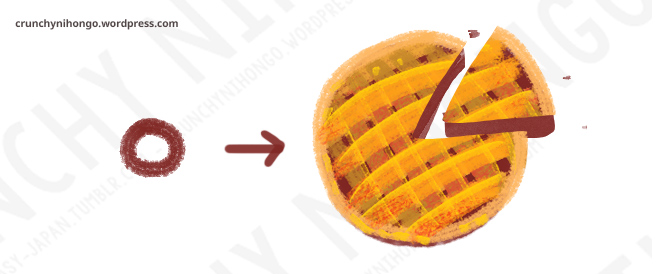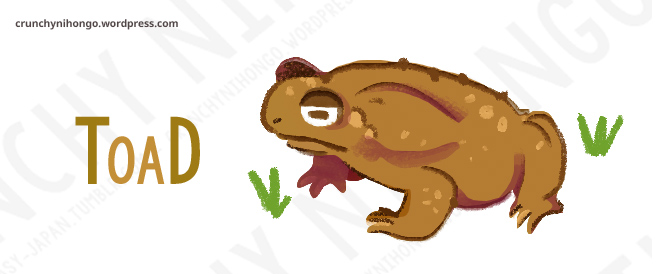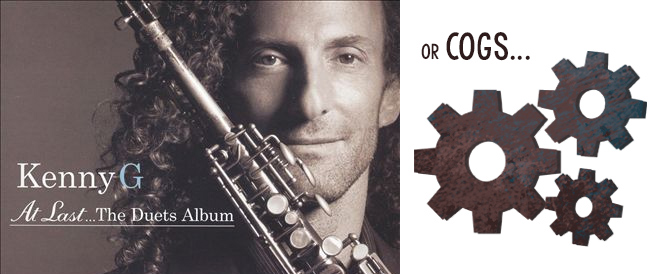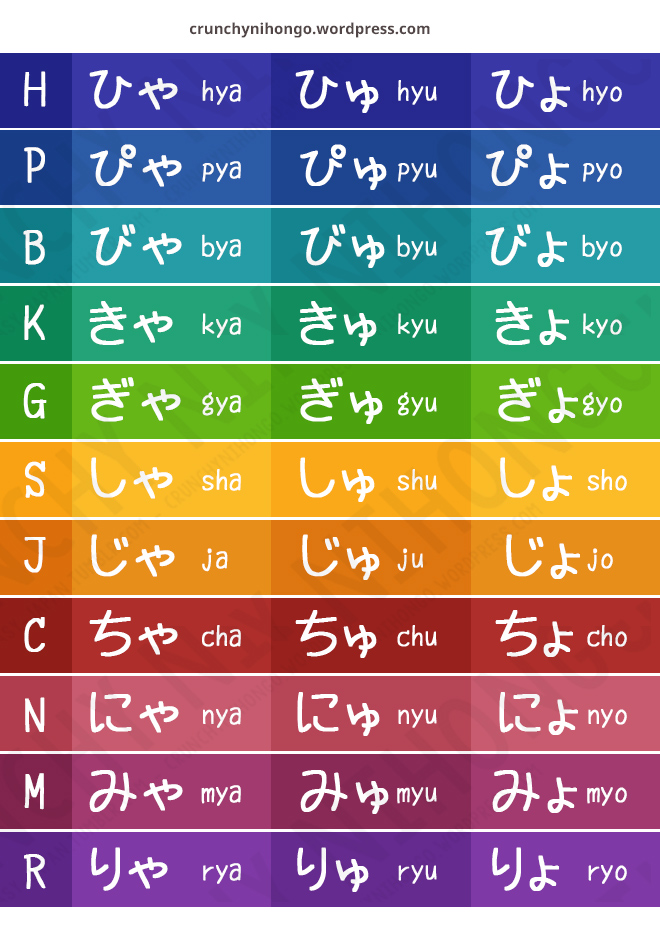Hi ! We hope this site helps you! ٩(ˊᗜˋ*)و As an Amazon Associate, we earn from qualifying purchases without additional cost. Click to read more about our Privacy Policy or Affiliate Disclosure
With this lesson, you will learn additional sound that can be made by adding a tiny circle or quotes or made by combining some of the shape in katakana.
As a quick info, you will not remember a new shape in this part 2 too since all the shape has been covered in Part 1! やった!!.The chart you saw in Part 1 isn’t actually the full katakana chart. You can check out the full chart below. And as you can see, the chart is showing up more sound but note that you won’t see any new shape !

TINY CIRCLE
The first one we gonna review is the shape with additional tiny quote and circle. The tiny circle is only used to change

パ ピ プ ペ ポ (PA PI PU PE PO)
How to remember it?
Well… we all love pies! yes

Mnemonics
When grandma makes delicious Apple pie, the kids
TINY QUOTES
The quotes create additional 4 set of sounds.

When the quotes placed on top of H row letter, the sound change into B. So it goes like this:
バ ビ ブ ベ ボ (BA BI BU BE BO)
Mnemonics
Think of


When placed on top of T row letter, the sound change into D. With exception of TSU become DZU, not DU. (TSU also is an exception in katakana… so it’s kinda predictable). The sound goes like this:
When the quotes placed on top of H row letter, the sound change into B. So it goes like this:
ダ ヂ ヅ デ ド (DA JI DZU DE DO)
Mnemonics
Think of a


When placed on top of S row letter, the sound change into D. With exception of SHI become JI, not ZI . (SHI also is an exception in katakana… so it’s kinda predictable). The sound goes like this:
When the quotes placed on top of H row letter, the sound change into B. So it goes like this:
ザ ジ ズ ゼ ゾ (ZA JI ZU ZE ZO)
Mnemonics
A mother says to you… “
You lower down your voice, and you can hear the baby sound… “


When the quotes placed on top of K row letter, the sound change into G. So it goes like this:
ガ ギ ク ゲ ゴ (GA GI GU GE GO)
Mnemonics
*you hear a trumpet sound*… who is it ?
To the one who doesn’t know who is he, he’s one famous American saxophone player.If you aren’t familiar with the name, you can think of a

ヂ and ジ difference
Both voiced as JI. Most of the time, you will use
Combination Sounds
The combination set sound only based on

And here’s the sound file of each set:
(Yes, they are the same set of sound with katakana counterpart)
HYA-HYU-HYO
PYA-PYU-PYO
BYA-BYU-BYO
KYA-KYU-KYO
GYA-GYU-GYO
SHA-SHU-SHO
JA-JU-JO
CHA-CHU-CHO
NYA-NYU-NYO
MYA-MYU-MYO
RYA-RYU-RYO
EXTRAKATAKANA SOUND
You might notice that the above part is very similar to Hiragana counterpart. But do you remember what we said about Katakana tougher than Hiragana?… Apart from the small
Mainly it’s used to support some English sound that did not exist in Japanese. Check out the list below, the one in red is the additional sound added. It might be hard to be memorized, but the way to read them is quite logical. So don’t bother to remember them, and just focus on their existence. Once you know that a specific word is using this sound, you can remember the usage.
ヴァ ヴィ ヴ ヴェ ヴォ (VA VI VU VE VO)
ワ ウィ ウ ウェ ウォ (WA WI WU WE WO)
Why don’t they just use ヲ? ….. Just remember that you might encounter the kana, and in that time, you’ll know how to read it 🙂
ファ フィ フ フェ フォ (FA FI FU FE FO)
チャ チ チュ チェ チョ (CHA CHI CHU CHE CHO)
ダ ディ ドゥ デ ダ ド (DA DI DU DE DO)
タ ティ トゥ テ ト (TA TI TU TE TO)
ジャ ジ ジュ ジェ ジョ (JA JI JU JE JO)
シャ シ シュ シェ ショ (SHA SHI SHU SHE SHO)
コングラチュレーション!!
Can you read the katakana above? It reads as CONGRATULATIONS!
Now what?
“I have mastered katakana, able to read children books, able to read some of the katakana written here and there… Mastered Katakana and now able to read the weird letter I found in game… Then what ??” you asked…
If you haven’t done it, we recommend that you to learn the basic grammar of Japanese next to get used to the Japanese language structure.
What’s next?
Learn the Japanese basic grammar
• Introduction to Japanese Grammar
